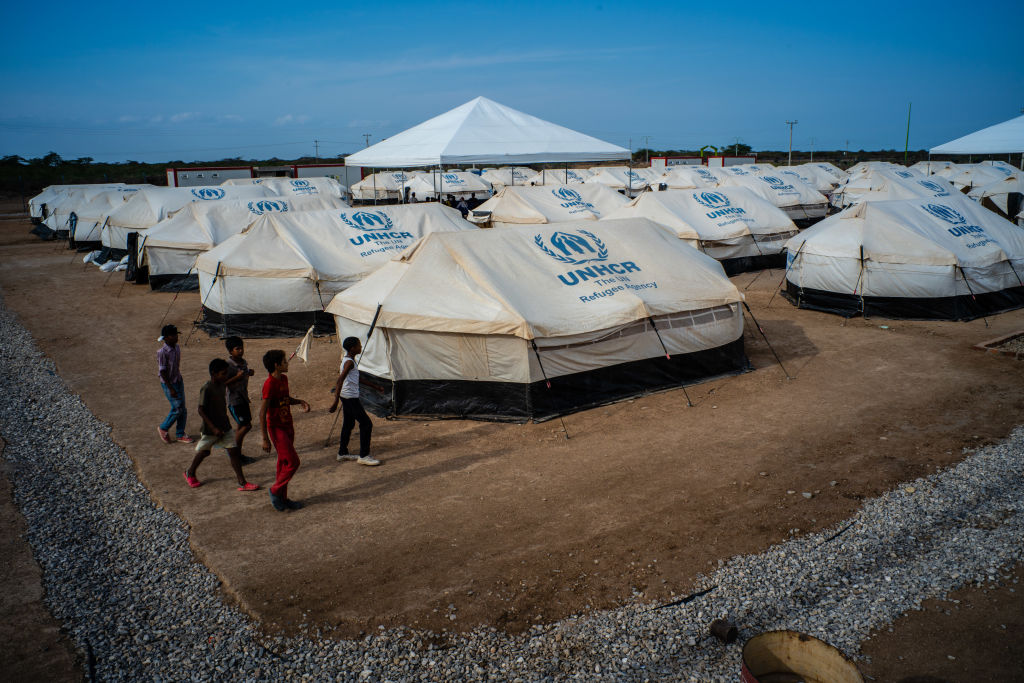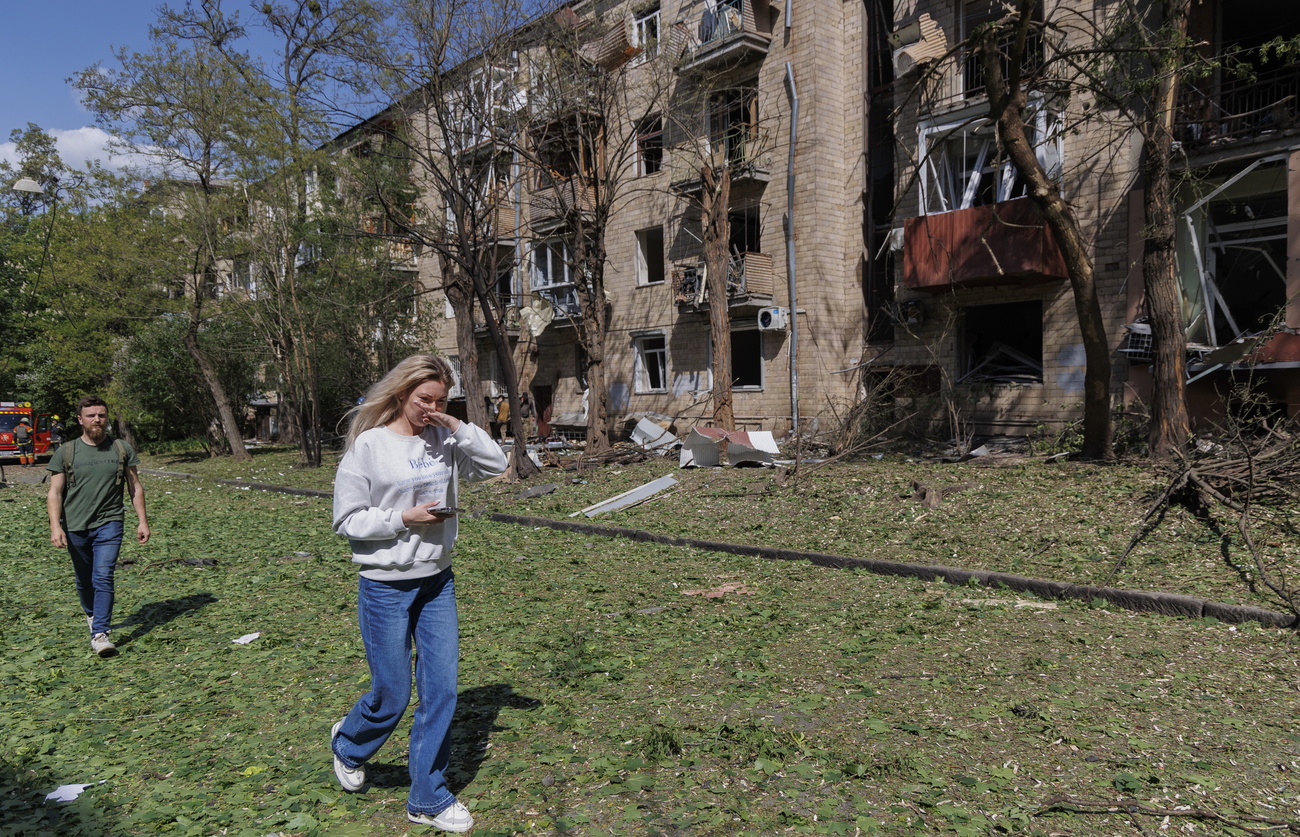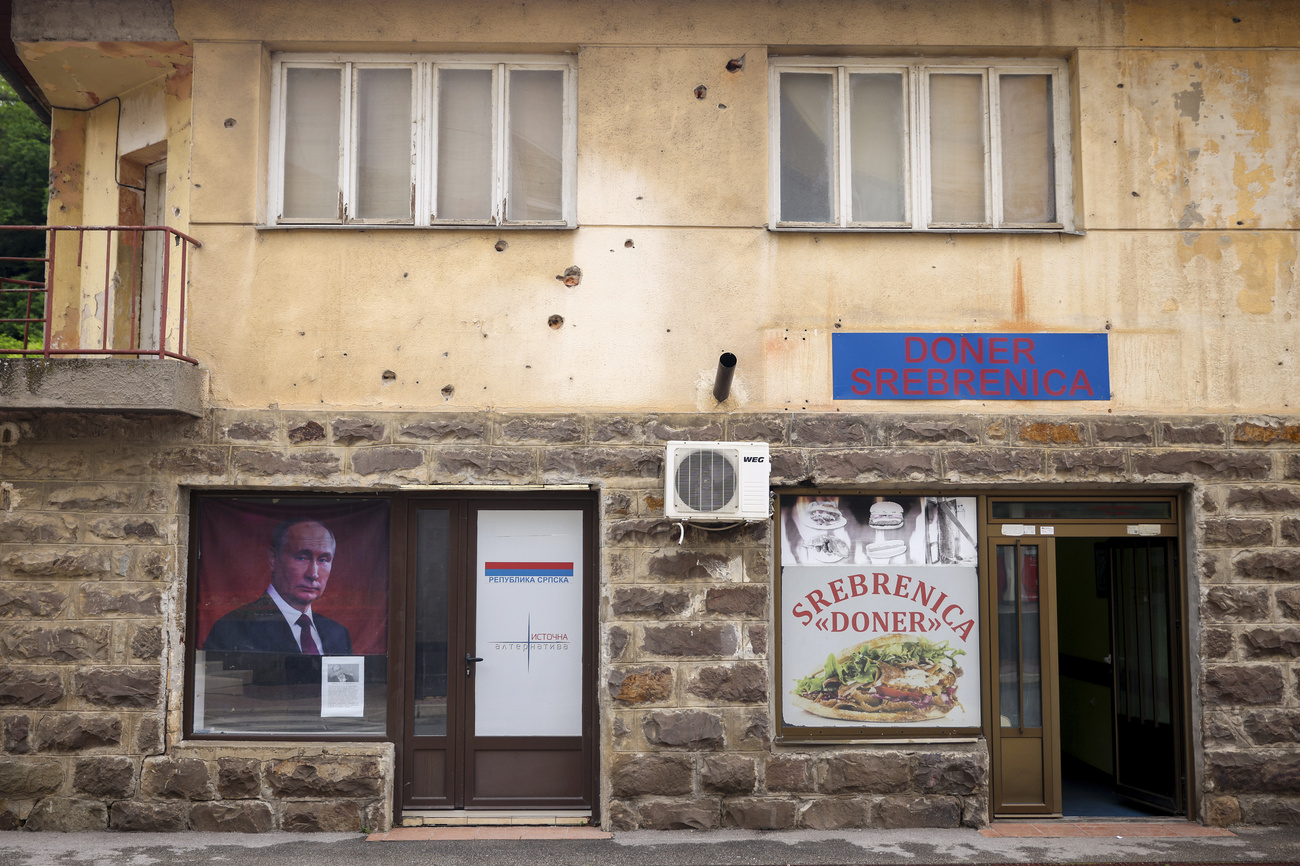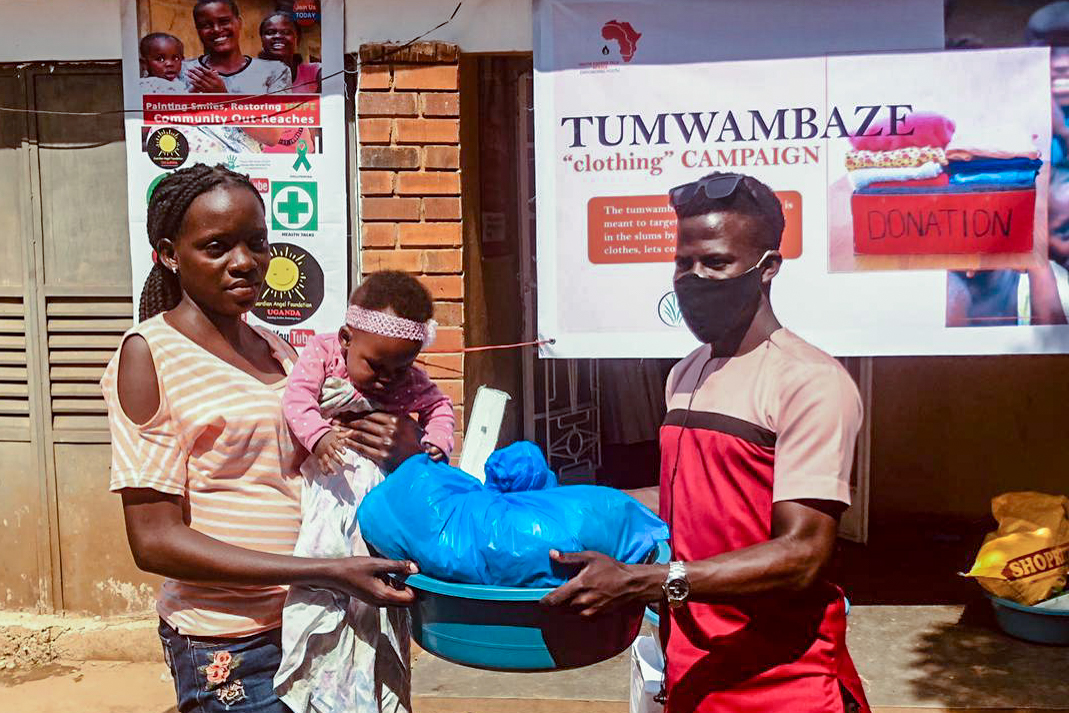How blockchain technology is making humanitarian cash transfers faster and safer

With a blockchain pilot project in Ukraine, the UN Refugee Agency (UNHCR) has shown that cash aid payments can arrive faster and more efficiently thanks to modern technology. A new centre of excellence is being set up in Geneva to promote the use of such innovative methods.
In mid-2024 there were more than 122 million displaced peopleExternal link worldwide, according to the United Nations. Global crises are creating ever more complex challenges, which require fast and flexible responses over long distances. This is true for all aid – including, and perhaps especially, money transfers.
“Transactions across national borders are often slow and costly. Also, many crisis regions just don’t have the necessary infrastructure,” says Stefan Bumbacher, a programme manager for cash and voucher assistance at the Swiss Agency for Development and Cooperation (SDC).
Each year, billions of dollars are disbursed in humanitarian and development aid, but inefficient processes can slow down the entire system. And the biggest question is always: is the money actually getting to the people it is supposed to reach.

More
Our weekly newsletter on foreign affairs
Halfway around the world without a bank account
Blockchain technology offers a solution for this, as it enables transactions that are transparent, secure and decentrally managed. All payments are stored in an unchangeable register that can neither be manipulated nor stopped.
A pilot project run by UNHCR in Ukraine shows how blockchain technology can be used in practice. The agency worked with the Stellar Development Foundation, a specialist in this technology, to implement an innovative blockchain payment solution for the distribution of digital cash to internally displaced people and refugees.
The pilot projectExternal link, which was rolled out in December 2022, ensured that cash aid was delivered directly into the hands of those being assisted – wherever they were and in real time.

More
How Switzerland is managing foreign aid at a time of global upheaval
For the people concerned the process is simple: after registering with UNHCR, they receive a text message instructing them to download a wallet app – a digital wallet for receiving and sending money – on their smartphone. A few minutes after verification, they receive the UNHCR aid payments directly on the app.
All they have to do then is go to the nearest MoneyGram branch and exchange the credit balance for the currency of their choice; no bank account is needed to access cash. Ukraine alone has over 4,500 MoneyGram branches where such withdrawals can be made.
Fast, agile and secure
One year after the project began, the UN had, in this way, paid out over $1.1 million (CHF1 million) to 1,500 displaced people in Ukraine.
Using blockchain makes sense not just because of its speed but also its flexibility, explains Malik El Bay from the Zurich think tank Dezentrum. A displaced person can keep the money safely in their digital wallet or withdraw it in any currency – wherever they are, and even if there is no functioning banking system.
If they flee to Poland, for instance, they can simply take the money across the border on their smartphone and withdraw it at a branch in Krakow.

But surely a solution of this kind exposes vulnerable people to the strong price volatility of cryptocurrency? To avoid this, the project makes use of so-called stablecoins – cryptocurrencies whose value is pegged to a conventional currency, such as the US dollar.
Thus, in Ukraine the Circle Internet Financial’s USD CoinExternal link (USDC) is used. This is a stablecoin that is fully backed by cash, short-term government bonds and similar liquid assets.
A new centre of excellence in Geneva
Following the successful launch of the pilot project in Ukraine, UNHCR, various UN partners and the Swiss government launched the Digital Hub of Treasury Solutions (DHoTS) in 2022. The hub’s mission is to promote financial inclusion in order to improve the lives of people in need around the world.
An important step in this direction is the creation of a UN Centre of Excellence in Geneva, which the SDC is helping fund to the tune of CHF1 millionExternal link until early 2026. The aim of the new centre is to facilitate access to global financial ecosystems and markets for the UN system and its partners.
“In addition to the use of new technologies, the DHoTS seeks to promote multilateral cooperation in order to make development cooperation more efficient and secure,” explains Alexander Widmer, who is in charge of the project at the SDC.
Switzerland is playing a leading role in promoting new technologies in the humanitarian and development sector. Numerous projects make use of blockchain technology. Thus, in the Climate Ledger External linkInitiative, Switzerland supports blockchain-based solutions for climate protection projects. The country also works with the UN Capital Development Fund to reduce transaction costs for remittancesExternal link, in order to promote financial inclusion in developing and emerging economies.
Switzerland also plays a key role in the private sector. Through projects such as LACChainExternal link in Peru, which is trialling digital wallets for small and medium-sized enterprises, and the promotion of real-time money transfer solutions in Colombia, Switzerland is driving innovation that promotes economic stability and financial inclusion.
Other schemes, such as Building BlocksExternal link by the World Food Programme, which uses blockchain for money transfers, are also co-financed by Switzerland. The country furthermore supports start-ups such as AidonicExternal link, which uses blockchain technology to improve transparency and efficiency in humanitarian aid.
Potential savings of up to $60 million
UNHCR processes two million payments worth over $6 billion each year. According to Bumbacher, programme manager at the SDC, up to $60 million could be saved annually if processes were standardised and harmonised.
Overall, Bumbacher explains, 23% of global humanitarian aid is disbursed directly to the recipients in the form of cash payments and vouchers.
“Humanitarian organisations often grapple with the same question: what is the most efficient way of getting money into a given country, and then directly to the recipients?” he says. This also gives rise to data protection issues.
The DHoTS wants to connect the payment centres of the participating multilateral partners in 135 countries with 500 global and local financial service providers, institutions and marketplaces, as well as more than 100 million displaced persons.
“It makes no sense for each organisation to sign an individual framework agreement with a local bank, negotiate fees, etc. It is important to coordinate all organisations, without taking away their freedom to decide which solution they want to use,” explains SDC representative Widmer.
One solution among many
According to El Bay, who supports the undertaking as an external consultant, it would be wrong to take the Ukraine blockchain pilot as the definitive model for the DHoTS. The work of the DHoTS can be roughly divided into two areas, he explains: “The first part is a classic digitalisation project by several UN agencies to achieve efficiency gains.”
The second, smaller part involves what El Bay calls “cutting-edge technology”, for instance sending money directly to an aid recipient’s mobile phone using new technologies such as blockchain.
An information sheet made available to SWI swissinfo.ch indicates that the DHoTS may in the future come up with its own solution to enable the recipients to use their credit directly.

More
Blockchain for sustainable supply chains: hype or saviour?
‘The main thing is that the money gets there’
Blockchain technology thus has the potential to make international cooperation more efficient, transparent and inclusive. According to the experts consulted, however, it is not a universal solution.
“You have to look at the specific situation and weigh up the alternatives,” Widmer says.
Bumbacher, too, affirms that it depends on the “actual case, conditions on the ground and aim of the project in question”.
El Bay concurs: “Blockchain is not a fixed solution within the DHoTS but one of many. The focus is on digitalising payment flows,” he says. “And the main thing is that the money gets to the right people.”
Edited by Balz Rigendinger. Adapted from German by Julia Bassam/gw.
Michael Heger holds a CAS in blockchain technology, is a member of DAO Suisse and is professionally and privately involved in the intersection of technology and social change.

In compliance with the JTI standards
More: SWI swissinfo.ch certified by the Journalism Trust Initiative











You can find an overview of ongoing debates with our journalists here . Please join us!
If you want to start a conversation about a topic raised in this article or want to report factual errors, email us at english@swissinfo.ch.